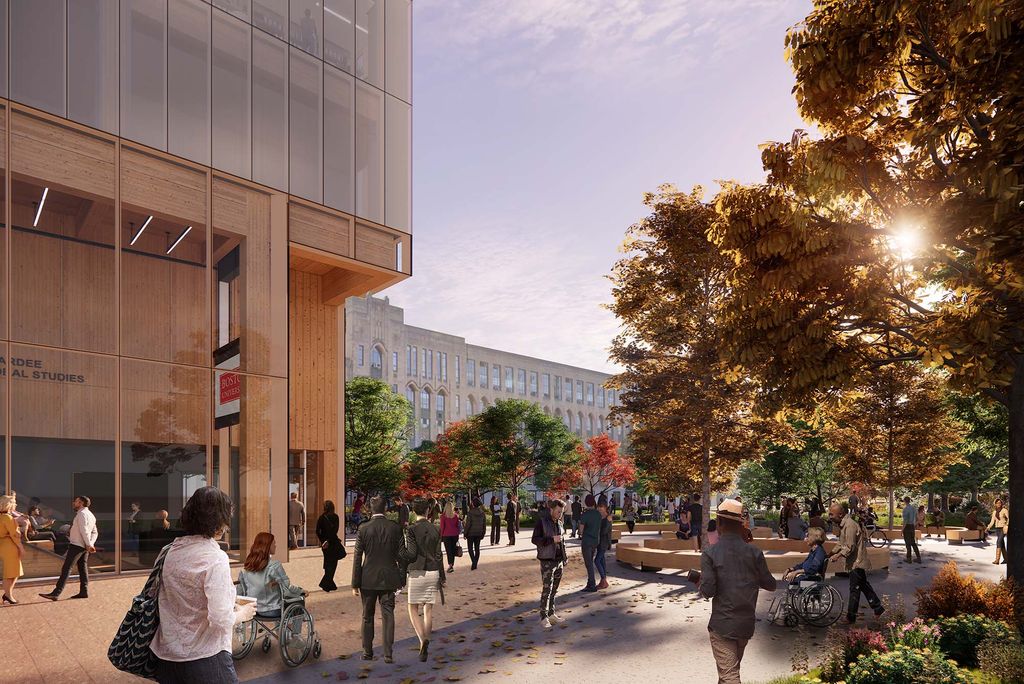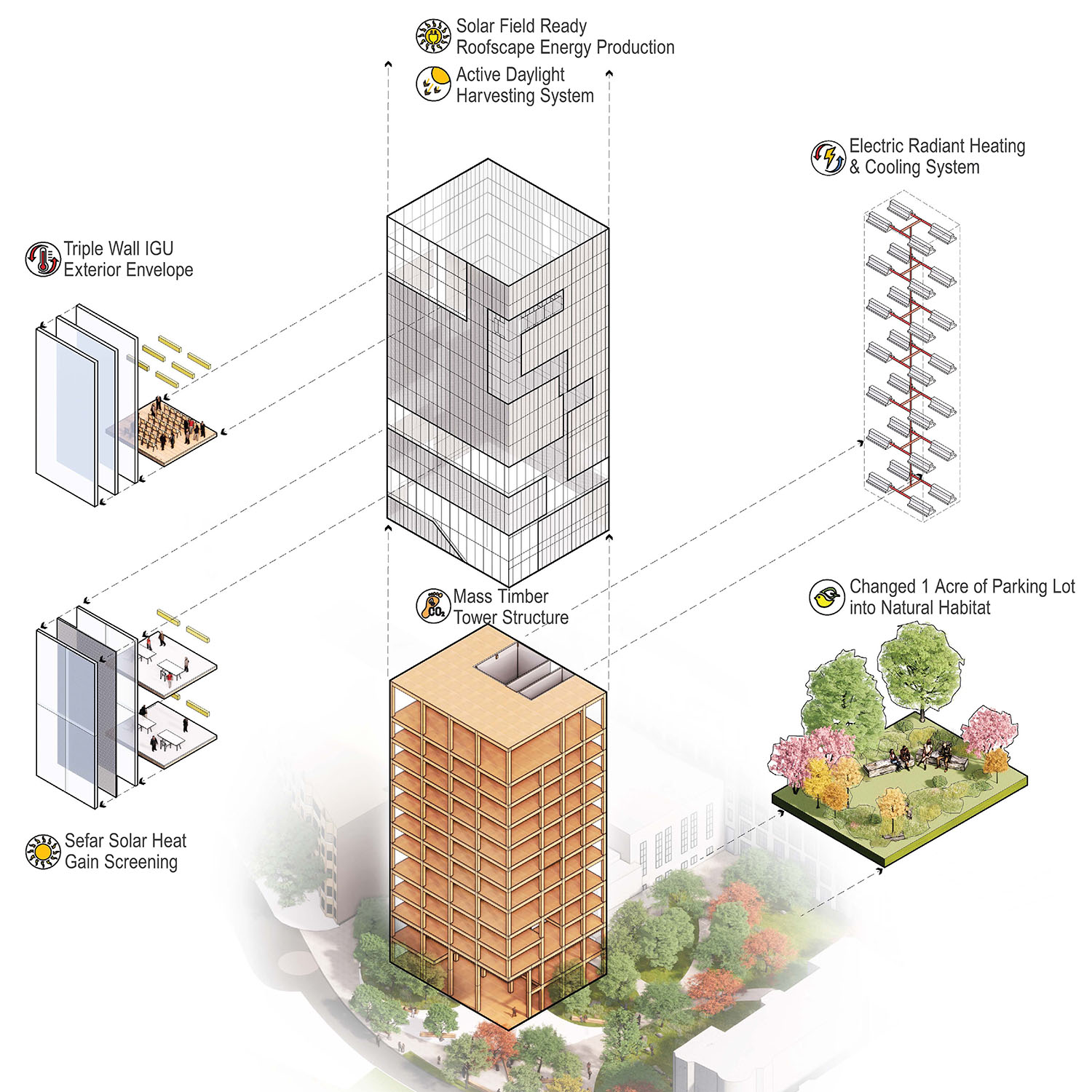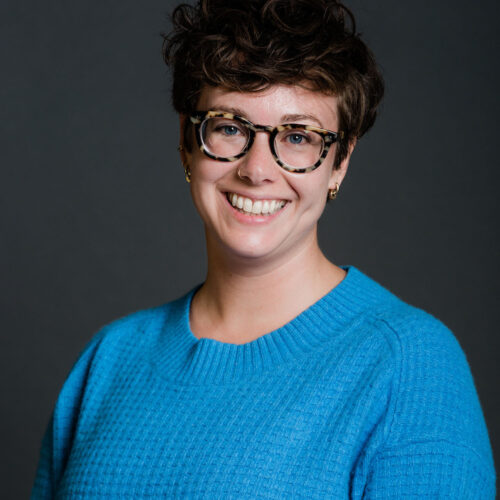After Five Years of Planning, Pardee’s New Home Will Unite Global Studies School
The 12-story building on Bay State Road will be the largest mass timber tower on the east coast and will include more green space near BU Beach

Construction on the new mass timber tower at 250 Bay State Road is scheduled to begin in earnest in late May 2026. Rendering courtesy of Diller Scofidio + Renfro
After Five Years of Planning, Pardee’s New Home Will Unite Global Studies School
The 12-story building on Bay State Road will be the largest mass timber tower on the East Coast and will include more green space near the BU Beach
With plans that have been in the works for five years, Boston University is building a new home for the Frederick S. Pardee School of Global Studies—one that will give the University another signature structure in the city’s architectural landscape. Plans for the 12-story, 186-foot-tall building indicate that it will be the largest mass timber tower on the East Coast.
The construction project, which also includes plans to create a vibrant green space in front of the tower, will replace the parking lot at 250 Bay State Road. The lot is currently sandwiched between the School of Social Work and the College of Arts & Sciences; pedestrians already cut through the lot to get from Bay State Road to Commonwealth Avenue. The tower will also sit alongside BU’s other recent signature building: the Duan Family Center for Computing & Data Sciences. In fact, from a central campus vantage point on Comm Ave, looking east, Bostonians will be able to see both the new Pardee tower and CDS rising over BU’s other buildings.
Tucked into the northeast corner of the existing parking lot, the new 70,000-square-foot Pardee building will bring all of the school under one roof. Currently, faculty and students affiliated with Pardee’s various centers operate out of seven separate brownstone buildings along Bay State Road.
“This is a chance to consolidate the school in one space,” says Scott Taylor, dean of Pardee. “For administrative and governance purposes, it’s really helpful to have everybody literally under one roof. But it’s also symbolically important. As we mark a significant milestone—our 10th anniversary is this year—and as the school becomes more and more recognized both nationally and internationally for our international relations research, teaching, and policy influence, the symbolism of having that building gives the school a unique identity, because it’s such a unique structure.”
Pardee officially opened in 2014, after its namesake, Frederick S. Pardee (Questrom’54,’54, Hon.’06), donated $25 million the prior year to endow it. In 2018, Pardee donated another $25 million to secure the school’s future. Pardee died in 2022, but his legacy and the driving mission of his namesake school live on.


An inviting communal space in the building’s first floor will open into a new acre-wide green space on campus. Rendering courtesy of Diller Scofidio + Renfro
When it opened, Pardee’s inaugural dean, Adil S. Najam, noted that it was the newest school on campus, charged with stewarding some of the University’s oldest and most cherished traditions. (Taylor succeeded Najam in 2022, becoming the school’s second dean.)
From its beginning, Pardee has been an aggregation of expertise, bringing together faculty from across the University to support interdisciplinary research aimed at the great challenge of advancing global human progress and educating the next generation of leaders who will address these issues. Its stated mission is nothing less than improving the human condition around the globe.
The school houses eight research centers, each dedicated to advancing human progress: the African Studies Center; the Center for the Study of Asia; the Center for the Study of Europe; the Center for Latin American Studies; the Institute on Culture, Religion & World Affairs (CURA); the Global Development Policy Center (GDP); the Middle East-North Africa Initiative; and the Frederick S. Pardee Center for the Study of the Longer-Range Future, which was founded as an independent entity in 2000 with support from Fred Pardee.
And until now, these research centers were spread across separate buildings along Bay State Road. The new tower will bring together all of this expertise into one location, enabling exactly the kind of interdisciplinary cross-pollination that is at the heart of Pardee.
The new building incorporates the collaborative, cozy feel of the brownstones, in a state-of-the-art design. Each of Pardee’s centers will occupy a floor, and every pair of floors (called “neighborhoods”) will be joined by a large, open “living room,” says Sean Gallagher, project leader with Diller Scofidio + Renfro, the architectural firm that designed the Pardee tower (and the Institute of Contemporary Art in Boston’s Seaport District). In these shared spaces, all the drywall will be peeled back to reveal the underlying timber structure, a striking design element that should make the spaces feel warm and inviting. The building’s top floors can be opened up to create an event space with views of the Charles River and beyond. The lobby will also include a medium-sized event space, as well as a wide staircase designed for studying and more informal collaboration.
“The building will become a convening space, a gathering space, a talked-about space in a way that benefits not just Pardee, but also, I think, BU as a whole,” Taylor says.
And, he adds, being in the same building will mean that students, faculty, and staff from different centers of study have many more opportunities for the kind of organic interactions that can sometimes lead to novel research and ideas—opportunities that are harder to come by when the school is stretched over seven buildings.
Plans for the new construction, which were set in motion more than five years ago, also incorporate a number of environmentally friendly updates. The building will be all electric, free of fossil fuels, and its roof will be equipped with hardware for solar panels. Triple-glazed glass will wrap around most of the building’s exterior, letting in lots of natural light, while controlling for solar heat on bright, sunny days; as a result, more than 85 percent of the spaces in the building won’t need perimeter heating or cooling. Additionally, using timber instead of concrete and steel will reduce the building’s embodied carbon footprint (a calculation of greenhouse gas emissions over the entire lifetime of the building) by 87 percent, Gallagher says.

“We can build in a way that not only produces less carbon, but also means less time on the site, and less pollution, less noise,” Gallagher says. “We’re not jackhammering concrete; it goes up pretty quietly and without producing all the construction dust and debris and noise that people are used to.”
Some initial work on the $118 million project will likely start by March 2026, though the construction won’t get underway in earnest until a few months later, after the University Commencement in May, says Sonia Richards, associate vice president for planning, design, and construction at BU. All told, Richards estimates the work should take about two years.
For Richards, Gallagher, and Taylor, the added open space is a huge draw. The design adds roughly an acre of landscaped green space to an otherwise dense urban campus, extending the beloved BU Beach right up to the Tsai Performance Center.
“It really will be a beautiful campus benefit, and a place for students to relax, study, and just hang out together outside,” Richards says.
The designers chose foliage, including some mature trees, that will thrive in the green space, providing both shade and visual appeal, Gallagher says.
Pardee’s former offices and classrooms in the buildings along Bay State Road “are being evaluated for both academic and residential use,” Richards says, adding that a decision hasn’t been made yet for their future use.
The new Pardee building is a key component of BU’s Charles River Campus Institutional Master Plan, which also includes renovations to Warren Towers and other infrastructure improvements.

Comments & Discussion
Boston University moderates comments to facilitate an informed, substantive, civil conversation. Abusive, profane, self-promotional, misleading, incoherent or off-topic comments will be rejected. Moderators are staffed during regular business hours (EST) and can only accept comments written in English. Statistics or facts must include a citation or a link to the citation.